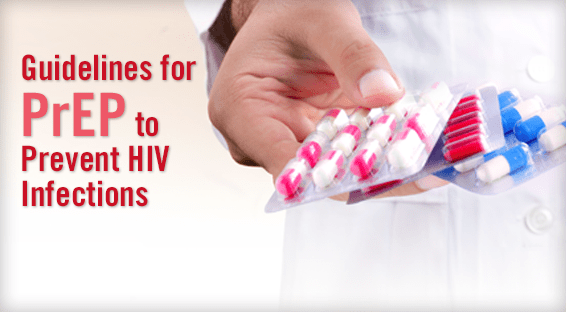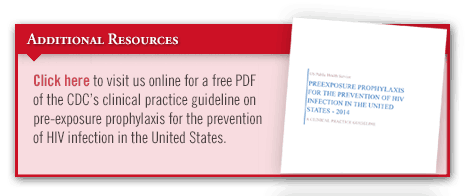Since the early days of the HIV epidemic in the United States, clinicians have made continued efforts to educate people on behaviors that could significantly reduce their risk of acquiring HIV infection. However, over the last 10 to 15 years, the rate of new infections in the U.S. has remained steady at about 50,000 per year. Recently, pre-exposure prophylaxis (PrEP)—daily doses of two specific antiretroviral medications to uninfected patients at high-risk of HIV infection—has been shown to be safe and effective to prevent HIV acquisition. “Despite our best efforts, we haven’t seen declines in annual HIV infection rates,” says Dawn K. Smith, MD, MS, MPH. The CDC recently released guidelines on PrEP to provide clinicians the information they need to use this prevention strategy and help drive down the rate of new HIV infections.
Important Recommendations
Published in the Morbidity and Mortality Weekly Report, the CDC guidelines report that taking PrEP regularly provides substantial protection against HIV acquisition in multiple populations. The guidelines offer recommendations on indications for prescribing PrEP medication. PrEP is recommended for HIV-uninfected patients who:
♦ Are in an ongoing sexual relationship with an HIV-infected partner.
♦ Are gay or bisexual men who have had sex without condoms or have been diagnosed with a sexually transmitted infection within the past 6 months, and are not in a mutually monogamous relationship with a partner who recently tested HIV-negative.
♦ Are heterosexual and do not always use condoms when having sex with partners known to be at risk for HIV (eg, injection drug users or bisexual men of unknown HIV status), and are not in a mutually monogamous relationship with a partner who recently tested HIV-negative.
♦ Have injected illicit drugs and shared equipment or been in a treatment program for injection drug use in the past 6 months.
Because the success of PrEP lies heavily on patients taking their medications as prescribed, the guidelines place an emphasis on the importance of adhering to the daily regimen (Table 1). “When providers prescribe PrEP, they should be clear with patients about why they need to take their medication on a daily basis,” Dr. Smith says. “Daily use is the only way to achieve substantial protection from HIV. It’s also important to understand that patients may have different barriers to maintaining medication adherence. We then must help patients overcome those barriers with help from commonly available tools and strategies. Patients should also know what to expect when taking PrEP, including the potential for side effects and how long they may last.”
Keys to Success
According to Dr. Smith, many patients who could benefit from PrEP do not share information on their sexual behaviors with providers because they are afraid of how they will be perceived. “We encourage providers, particularly those in communities with high rates of HIV infection, to be proactive in helping their patients avoid infection,” she says. “That includes taking a better sexual history and demonstrating an openness to discuss issues like whether they’ve had a sexually transmitted infection or who they’ve had sex with in the past. The key is to do this in a non-judgmental manner.” The guidelines recommend informing candidates for PrEP about the goals of using this prevention method (Table 2).
Anecdotal evidence also suggests that some patients visit healthcare providers who are unfamiliar with PrEP, are unwilling to provide antiretrovirals to HIV-negative patients, or are unaware that PrEP has been beneficial in multiple populations at risk. “We hope the guidelines increase awareness among providers that there are multiple situations in which PrEP may benefit patients,” says Dr. Smith. “PrEP should be offered in some cases, and we need to improve use of these guidelines.”
Dr. Smith notes that providers practicing at sexually transmitted disease clinics or in hospitals often see patients who are appropriate for PrEP but feel they should not offer it because they often do not provide continuous care. “In order to protect more high-risk patients, we need to develop models for linking these individuals to the appropriate care systems,” she says. “That may mean partnering with primary care providers who are willing and able to provide PrEP at their clinics. More research is needed on the delivery of health services to understand how we can improve the use of PrEP and make it available to populations that would benefit most.”
Dr. Smith encourages providers to refer to the CDC guidelines to fully understand the promise of PrEP and ensure that the treatment is provided to the most appropriate candidates. For those looking for additional advice or information, the CDC has established PrEPline, a dedicated toll-free clinicians’ consultation service that can be reached at 855-448-7737 or by visiting https://nccc.ucsf.edu/clinical-resources/pep-resources/prep.



